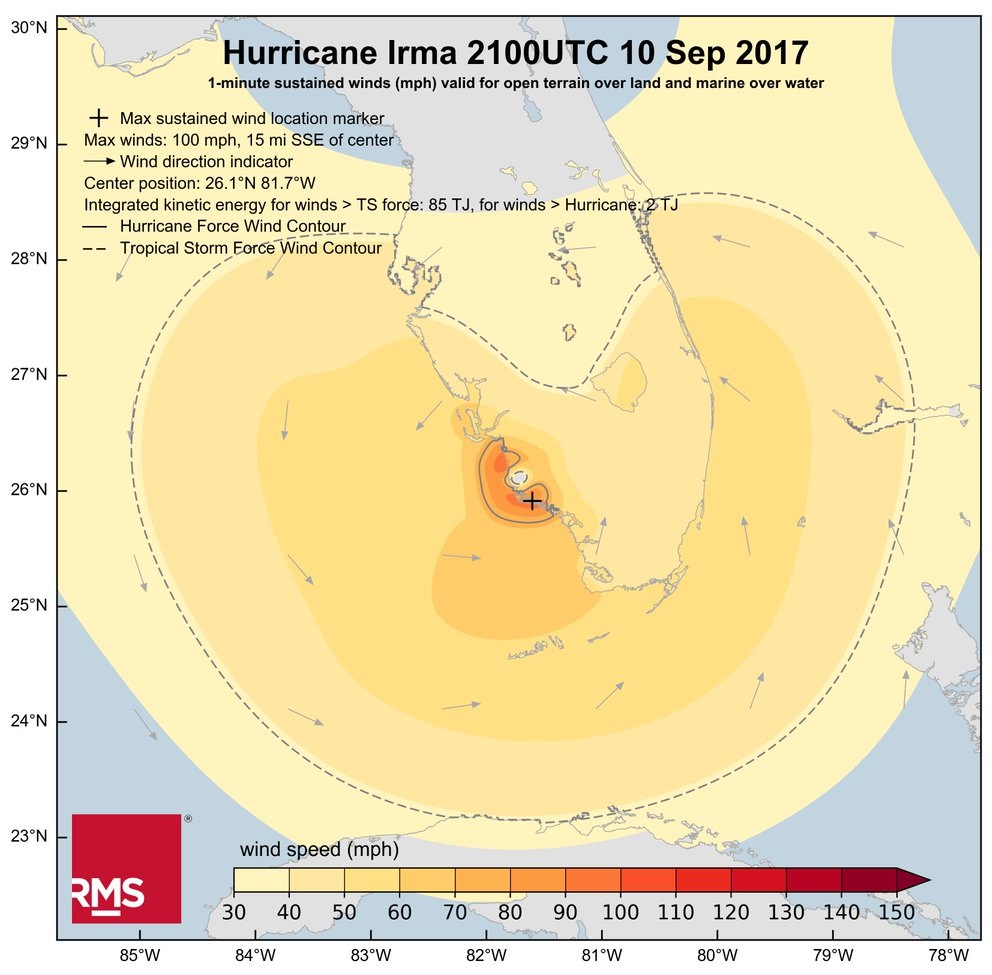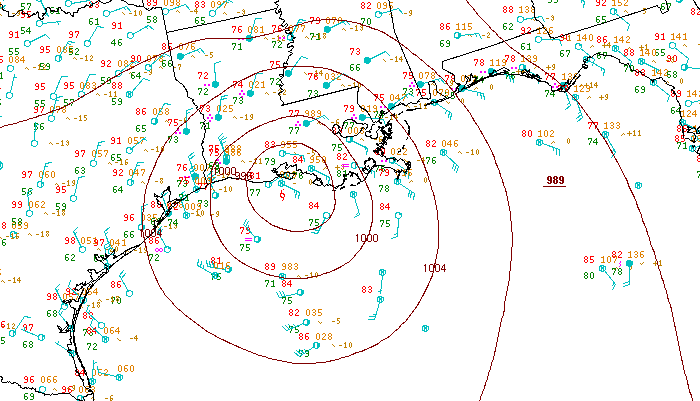Prioritize...
When you've finished this section, you should be able to describe the impacts of friction on wind speed, as well as describe the magnitude of the frictional force given a particular terrain.
Read...
So far, we've covered the main force that causes the wind (the pressure-gradient force), and the Coriolis force, which is an apparent force that arises because of the movement of air over our spherical, rotating earth. But, we have one more important force to cover in order to really get a handle on how the wind blows, and it's a force you're probably familiar with from other aspects of your life -- friction. In short, friction is a force that resists motion. If you try to "skate" across a floor with shoes on, you'll quickly realize it doesn't work very well because friction between the bottom of your shoes and the floor stops your feet from sliding easily. When driving, friction between your tires and the road helps you maintain control of your vehicle as you go around a curve. So, friction is a very important force!
How does friction impact the movement of air? Well, like the title of the 1980 Bob Seger song, friction is a force that works "against the wind" near the surface of the earth. I'll start by showing a quick example that I think will make the point. Below is an analysis of surface winds around Hurricane Irma as it was making landfall in southwest Florida around 21Z on September 10, 2017. The shadings denote wind speed, with darker oranges indicating faster winds. The arrows indicate the general direction of air movement (which is counterclockwise around the center of the storm).

If you look closely, you'll notice that there's an abrupt drop in wind speed over Florida compared to over the surrounding water. This decrease in wind speed over land is evident not only near the center of the storm (just north-northwest of the "+" sign), but throughout Irma's entire wind field. Also, note how the abrupt decrease in speed closely mimics the shape of Florida's coastline. Near the coast of southeast Florida, for example, winds were blowing at 50 to 60 miles per hour over the waters of the Atlantic, but only 40 to 50 miles per hour on land. Without reservation, this rather abrupt reduction in wind speed was a consequence of friction over rougher land.
It may not be intuitive to you that air in motion near the earth's surface is slowed by friction. After all, at slow wind speeds, friction between the air and the ground (or other objects like trees and buildings) is indeed rather small. But, once the pressure-gradient force puts air in motion, collisions between air molecules and the stationary, rough ground cause the air to slow down a bit. So, when the wind blows, friction at the earth's surface acts to produce a wind-speed profile that increases with height because air right near the earth's surface is slowed the most by friction. The effects of friction decrease with increasing height above the ground, leading to faster wind speeds with increasing height (all else being equal).
So, what determines the magnitude of the frictional force? For starters, the magnitude of the force of friction increases with increasing speed: the faster surface winds blow, the greater the force of friction. The magnitude of friction also depends on the "roughness" of the surface. For example, air blowing across the flat plains of Kansas will encounter much less friction than, say, air crossing the rugged Rocky Mountains. Wind blowing over water (oceans, lakes, etc.) encounters the least amount of friction. The difference in friction over land versus water explains the abrupt decrease in wind speed over land in the surface wind analysis for Hurricane Irma above. Wind speeds over land were slower because of stronger friction over the relatively rough land compared to over the open ocean waters.
But, friction doesn't just impact wind speed. It also impacts wind direction. Recall that given enough time, if only the pressure-gradient force and the Coriolis force were acting, air would flow counterclockwise, parallel to local isobars, around low pressure in the Northern Hemisphere.

In the analysis of sea-level pressure around Tropical Storm Lee from September 8, 2011 that I introduced in the previous section, you can clearly see the sense of counterclockwise circulation from the wind barbs around the center of low pressure. But, the winds aren't blowing parallel to local isobars as we would expect if just the pressure-gradient force and the Coriolis force were acting. In fact, winds (especially those over land, where friction is stronger) are crossing isobars in toward lower pressure somewhat. For a better look, I've drawn some wind arrows over the northern half of the storm to better highlight the fact that the wind is crossing the isobars in toward lower pressure somewhat.
Ultimately, friction was the main reason why the winds were crossing the isobars as they circulated counterclockwise around the center of low pressure because friction disrupts the balance that develops between the pressure-gradient force and the Coriolis force. We'll talk more about that in the next section, and put together all the forces we've covered to help you make judgments about wind direction and speed. Read on!